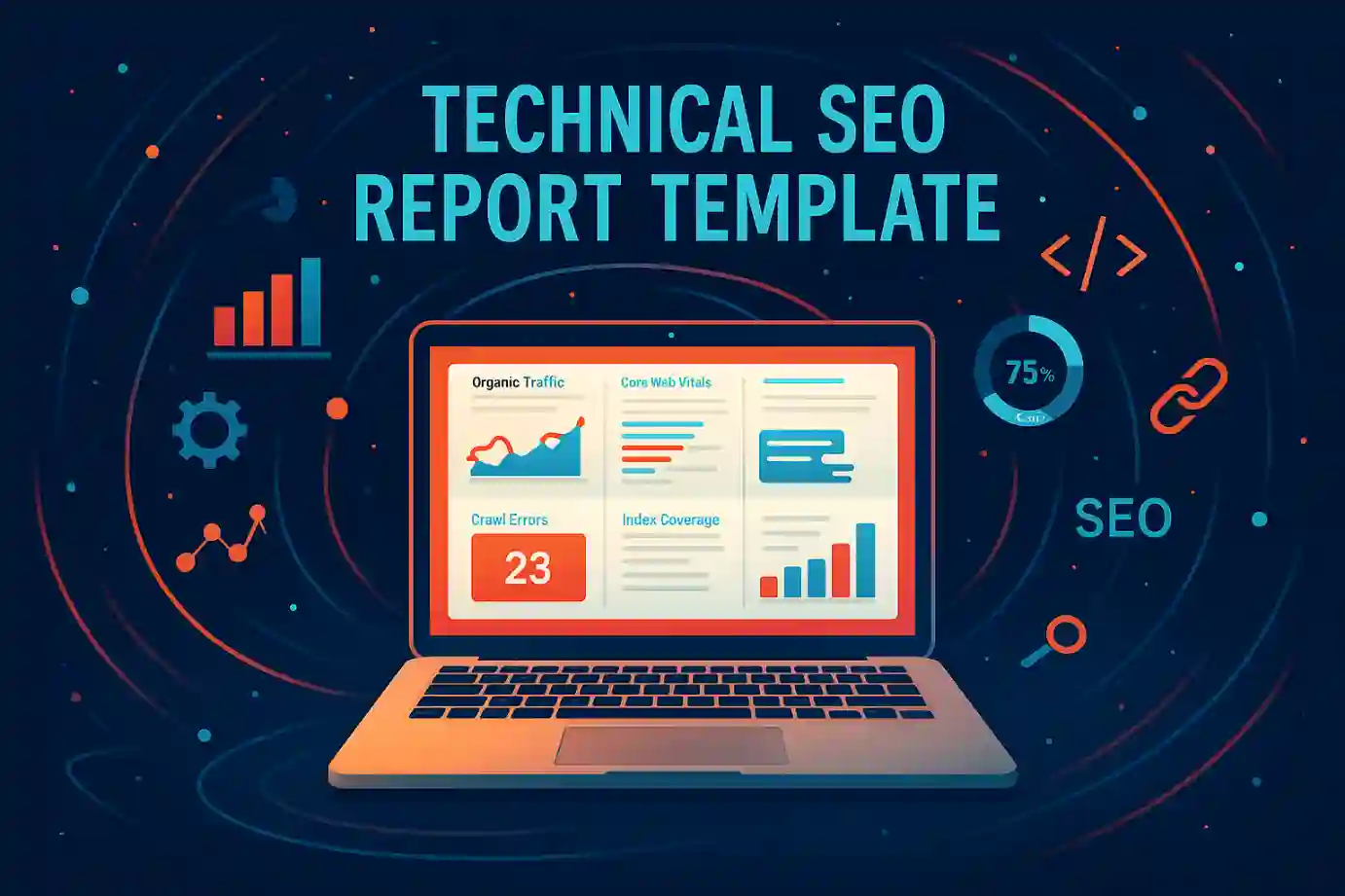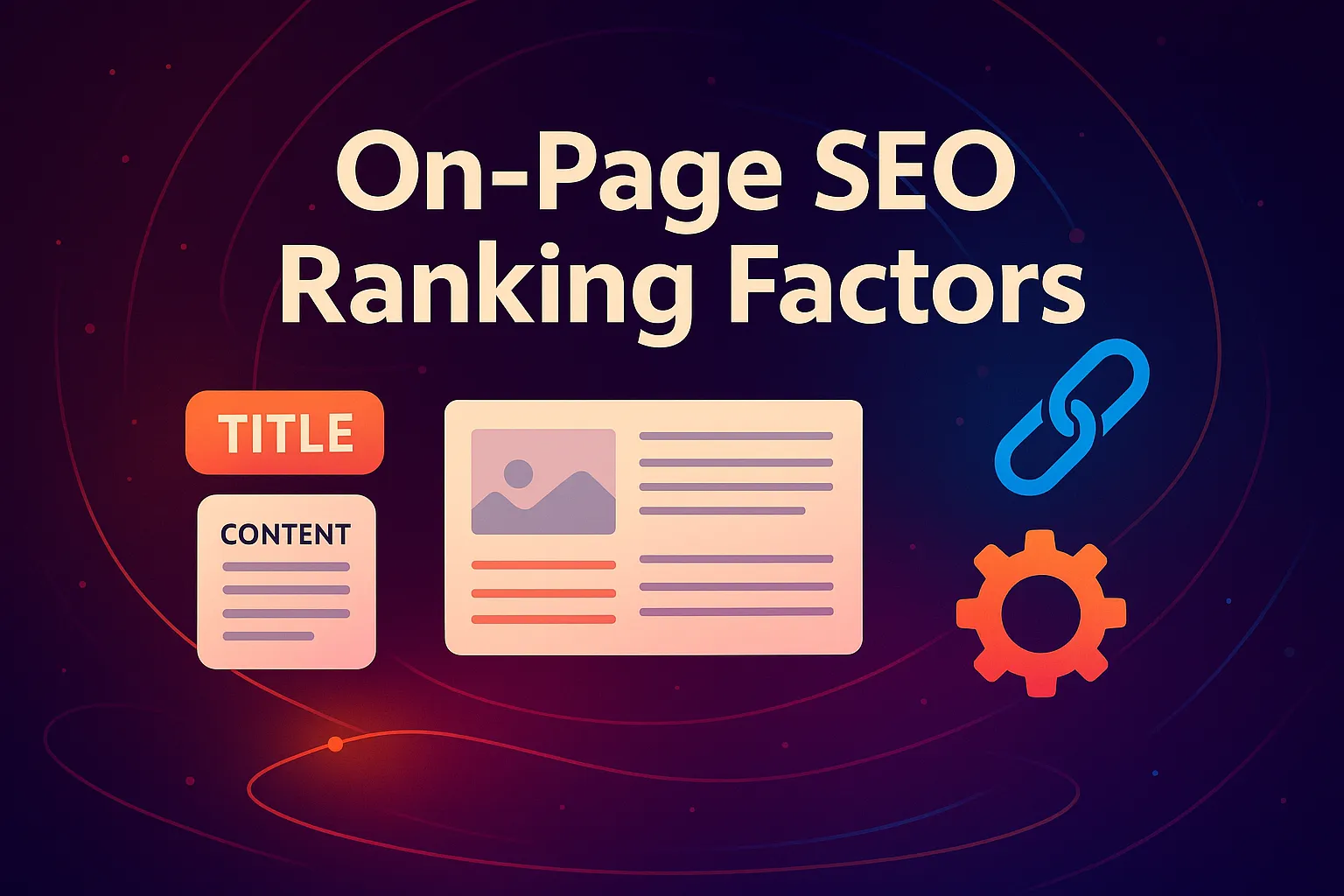What Is a Technical SEO Report Template?
A technical SEO report template is a structured, repeatable format used to track and communicate technical website issues that impact search performance. Rather than starting from scratch every time you audit a site, a template helps you plug in the right data from tools like Google Search Console or Ahrefs and focus on what matters: crawlability, page speed, indexation, mobile usability, Core Web Vitals, and more.
At Vibe Branding, we’ve built and refined our own internal reporting system over the last 10 years. Our clients vary widely—from fast-growing startups to local service-based businesses—and this report framework has become our foundation for high-quality, scalable, and actionable SEO work.
TL;DR: What You’ll Learn in This Post
- Why a technical SEO report template is a must-have for SEO professionals and marketers
- The exact tools and methods we use at Vibe Branding to build and automate reports
- Key sections every technical SEO report should include (with real examples!)
- How to customize the report for different clients or websites
- Tips to present your data in a way that non-technical stakeholders can actually understand
- How this one report saves our team hours every month and keeps our clients happy
Why Technical SEO Reporting Matters More Than You Think
You can have the best content and backlink strategy in the world, but if your site’s technical foundation is weak, it won’t perform. We’ve seen beautiful websites underperform due to issues like broken links, redirect loops, or poor mobile responsiveness.
This is why our technical SEO report template is often the first tool we reach for when a new client signs on. These reports are like health checkups for your site.
They surface invisible problems that silently kill rankings and conversions. Better yet, they give your team a structured list of fixes that can lead to fast wins and long-term performance boosts.
They also help us communicate value to clients—especially those who aren’t familiar with SEO lingo.

The Core Components of Our Technical SEO Report Template
Our template is divided into five main sections—each designed to address a critical area of technical SEO. These sections aren’t just checklists; they’re built to guide interpretation and action.
Crawlability & Indexation is always our first focus. If Googlebot can’t access your pages, they might as well not exist.
We use GSC and Screaming Frog to identify crawl errors, blocked resources, and sitemap issues. Core Web Vitals is next. Since Google made LCP, FID, and CLS ranking factors, we’ve prioritized these user experience metrics.
A slow or unstable page can kill engagement—even if the content is great. Mobile Usability & Site Speed rounds out the UX side.
We audit mobile responsiveness, viewport settings, and page load speeds to ensure users have a smooth experience across devices. Then there’s the Technical Errors section.
This includes broken links, missing alt tags, duplicate content, incorrect canonical tags, and JavaScript rendering issues—all pulled from Ahrefs or Sitebulb. Lastly, we include an Action Plan with prioritized tasks.
It’s what turns this report into a monthly roadmap.
Section | Tools Used | Key Metrics Tracked |
Crawlability & Indexation | GSC, Screaming Frog | Indexed URLs, Errors, Crawl Stats |
Core Web Vitals | PageSpeed, GSC | LCP, FID, CLS |
Mobile Usability | GSC Mobile Test | Viewport issues, touch elements, scaling |
Technical Errors | Ahrefs, Sitebulb | Broken links, Redirect chains, Canonicals |
Action Plan | Custom | Task list, Status updates, Impact ranking |
Tools We Trust to Build These Reports
There are a lot of SEO tools out there. Some are powerful but confusing, others are user-friendly but shallow.
After years of trial and error, here’s our go-to toolkit for technical SEO reporting: We use Google Search Console for all things related to crawl stats and indexing.
Google Analytics 4 helps us connect technical issues with user behavior. For deep crawls, we rely on Screaming Frog, and Ahrefs is our go-to for backlink health and on-page audits.
PageSpeed Insights and Lighthouse give us real-world speed data and Core Web Vitals. And to tie everything together visually, we use Looker Studio or DashThis—depending on the client’s preference—for automated dashboards.
All of these tools feed directly into our technical SEO report template, and our team knows exactly how to plug them in and interpret what comes out.
Customizing Reports for Different Client Needs
The real magic of this template is how flexible it is. No two clients are the same, and our reports reflect that. If we’re working with a local dentist, we’ll put extra focus on mobile usability, GMB performance, and schema markup.
For eCommerce, we zero in on crawl depth, site architecture, and speed on product pages. The format stays consistent, but the emphasis shifts based on what matters most to that business.
We’ve even added custom blocks that track revenue-related metrics alongside technical ones—so clients can see how a faster site leads to more conversions. This modular approach means we can duplicate the template for new clients and make quick tweaks based on their vertical, platform (WordPress, Shopify, Webflow), or SEO maturity.

How Often Should You Run a Technical SEO Report?
This is one of the most common questions we get. Our answer: it depends on the site and its activity level.
For new clients or websites undergoing major changes, we start with a full audit. From there, we schedule monthly reports to track progress, monitor regressions, and highlight new issues.
For stable websites, a quarterly deep dive is usually enough. But if you’re planning a site migration, launching a new feature, or experiencing a ranking drop, an emergency audit is essential.
This consistency builds accountability. It also helps our clients plan better: instead of guessing, they get real data and clear next steps every month.
What Common Issues the Template Helps Uncover
Our template shines when it comes to surfacing the things you can’t see just by looking at a webpage. We frequently catch issues like:
- Crawl Errors: 404s, blocked resources, and sitemap exclusions.
- Indexation Problems: Duplicate pages, paginated content issues, or canonical conflicts.
- Performance Bottlenecks: Slow-loading JavaScript, large images, or LCP violations.
- Structured Data Errors: Schema tags that don’t match Google’s recommendations.
- Broken Internal Links: Which can seriously hurt crawl depth and UX.
When these problems show up in red on the report, we don’t panic—we prioritize. Each fix is assigned a status and included in the Action Plan so our developers or the client’s team knows exactly what to tackle first.
How to Present Technical SEO Data So People Understand It
Let’s be honest: most stakeholders don’t want to read a 15-page technical doc. That’s why we designed our report to be both insightful and accessible.
Every report begins with a clean Executive Summary: 5 bullet points that summarize what happened, what improved, and what still needs attention. Then we use color-coded scores (green = healthy, red = fix now) to make scanning easier.
Charts track Core Web Vitals over time, while simple tables show indexation trends or crawl errors. We even add screenshots for things like broken page rendering or layout shift issues, so our non-technical clients can see the problem.
We include a “Next Steps” slide at the end with 3–5 action items prioritized by impact. If someone only has 5 minutes to read the report, they’ll still leave with clarity and direction.

Automation & Sharing Options That Save You Hours
Manual reporting is dead. Our technical SEO report template is built to automate and scale.
Once we set up the data sources in Looker Studio or DashThis, the numbers update in real-time. No more screenshotting GSC graphs or exporting GA4 reports.
Each report is shared via:
- Live Dashboard Link for ongoing visibility
- Scheduled Email with PDF for clients who like summaries
- Downloadable PDF Option for archiving or in-person meetings
This level of automation saves us dozens of hours per month. We use that time to focus on fixes, strategy, and growth.
Why Our Template Improves Results and Builds Trust
At the end of the day, a good report isn’t just about finding errors—it’s about solving problems and showing progress. This is where our technical SEO report template excels.
It gives us a baseline to measure improvements (like page speed increases or fewer 404s). It turns vague tech-speak into clear business wins.
And it builds transparency with our clients—something that’s been key to our 10 years of growth at Vibe Branding. We’ve had clients forward our reports to their investors, use them to pitch redesign budgets, and even include them in their own internal board meetings.
That’s how much trust they place in the format.





